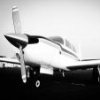LOP convinced and converted!!!
-
Members Online
- corvar01
- MikeOH
- 1980Mooney
- patrickf
- NickG
- Ron McBride
- MDMooney
- AaronJr
- Scottknoll
- varlajo
- Igor_U
- Fly Boomer
- 201Steve
- 1967 427
- Fast Yellow Fellow
- FlyingScot
- chrisburdzy98
- BDPetersen
- mluvara
- Oklahoma Mooney
- GeeBee
- DRH4249
- mmcdaniel33
- Nippernaper
- Mark942
- Rwsavory
- patriot3300
- scottarden
- Lois
- EarthboundMisfit
- 47U
- Hank
- Joshua Blackh4t
- Ragsf15e
- EricJ
- redbaron1982
- Marc_B
- CCAS
- Matt M
- Schllc
- Blaze
- Rocket_Driver
- ohdub
- skydvrboy
- Obsession2


Recommended Posts
Join the conversation
You can post now and register later. If you have an account, sign in now to post with your account.